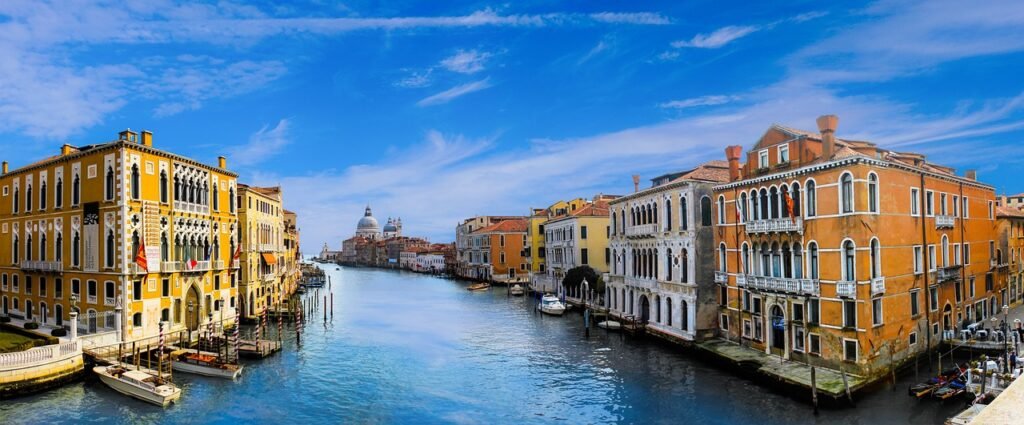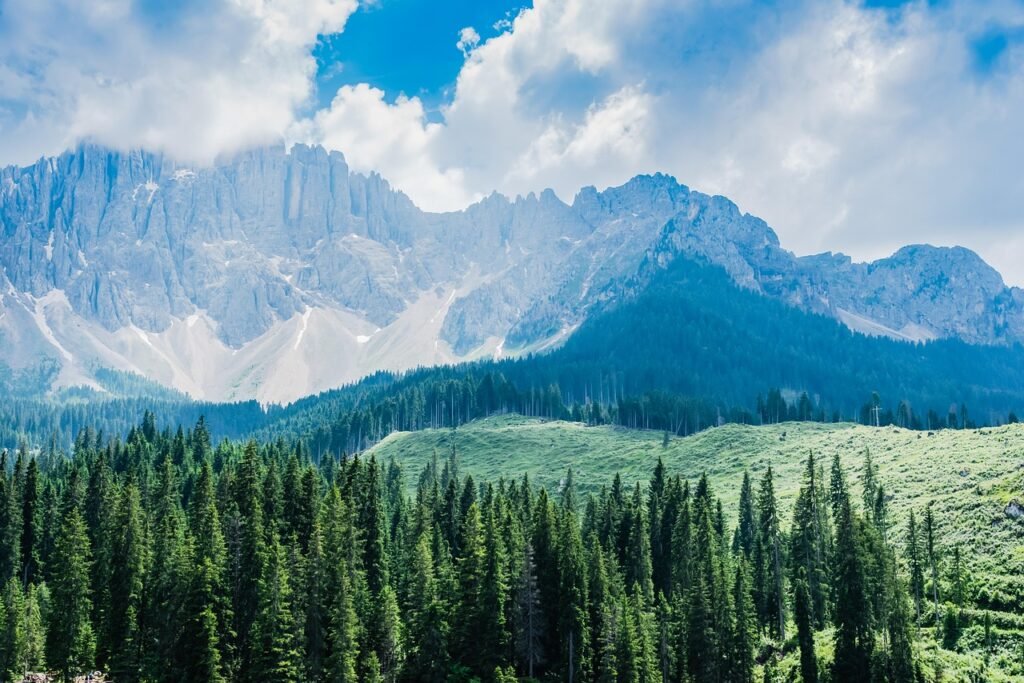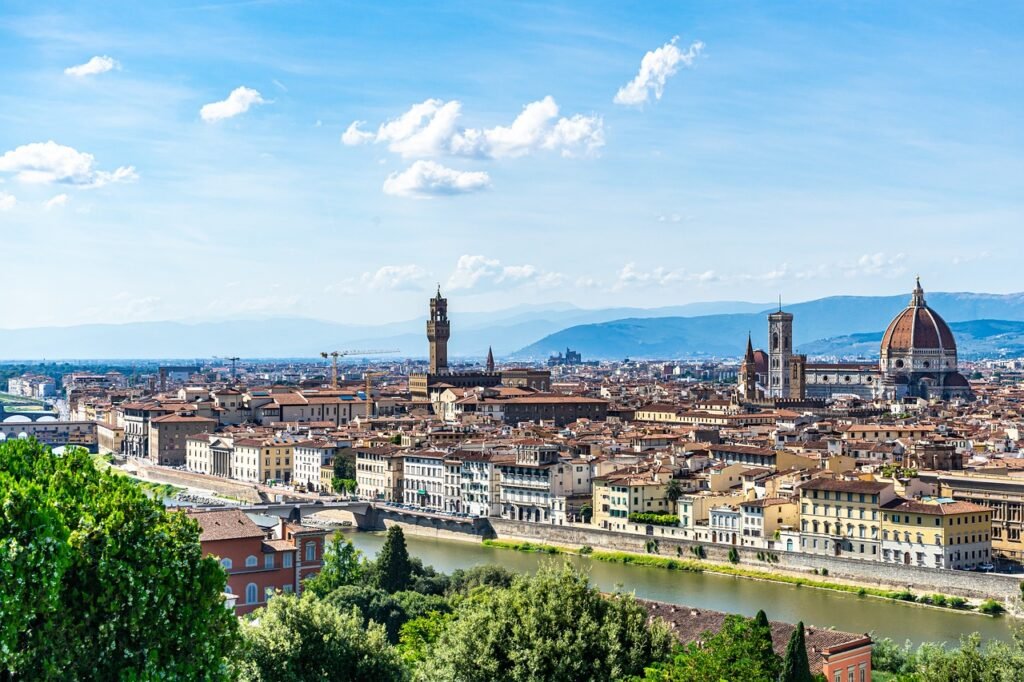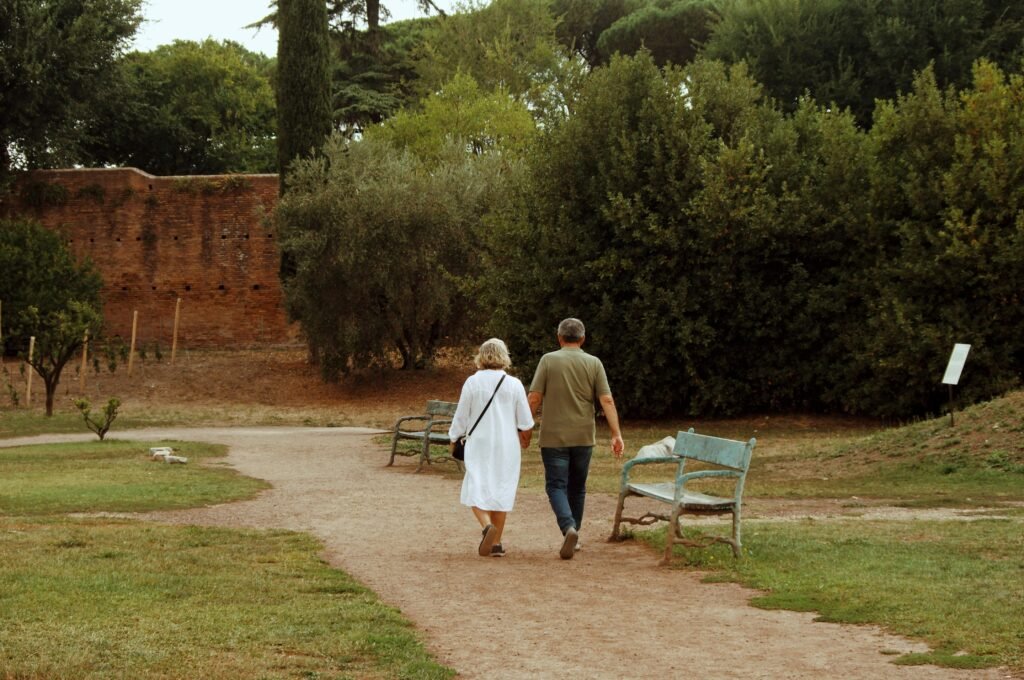What makes Italy so irresistible? Is it the food, the art, the ruins, or the people? Maybe it’s all of it and more. With 60 UNESCO World Heritage Sites, incredible landscapes, and traditions passed down through the generations, Italy is full of stories.
After wandering its ancient streets, tasting its boldest flavors, and soaking up its soul, I’m sharing 20 mind-blowing facts about Italy. Unlike your typical trivia, this one is a bit different. These are deep cultural Italian facts, full of charm, complexity, and heart.
Whether you’re a curious traveler or love Italy’s cultural aspects, this list is designed to make you love this country even more.
Quick Jump
Toggle20 Facts About Italy You Must Know
1.Rome Wasn’t Built in a Day — But Its Influence Is Eternal
Facts about Rome, Italy! If there is one city that truly feels alive with history, it is Rome. I remember walking those cobbled streets for the first time and thinking, This is not just a city; it is a time machine.
Founded in 753 BC, Rome blossomed into one of the most powerful empires in human history. From the perfectly preserved Pantheon to the haunting ruins of the Roman Forum, every corner tells a story. And within Rome’s walls lies Vatican City, the smallest country on Earth and the spiritual centre of Catholicism.
Do you want a moment of magic? Try standing in the Eternal City and spotting the snow-capped Abruzzo Massif in the distance.
You can read more in this travel feature: Can You See the Snow-Capped Abruzzo Massif From Rome?
2. The Colosseum: Ancient Engineering Marvel Still Standing Tall
One of the wildest facts about the Colosseum in Rome, Italy, is that it once held up to 80,000 spectators. Imagine that! Gladiator duels, wild animal hunts, and even mock naval battles occurred right there in the heart of Rome.
Finished in 80 AD, the Colosseum still stands as a monument to Roman ambition and genius. Today, over 7 million visitors walk through its arches yearly, proving its legacy is as strong as ever.
Are you curious to experience it yourself? I recommend this guide: What is the best Colosseum tour in 2025?
3. Venice: The Floating City With 150+ Canals
Interesting facts about Venice, Italy! If there’s one place that feels like it belongs in a dream, it is Venice. With 118 islands connected by over 400 bridges, this floating city is one of Italy’s most captivating destinations.

And here’s a fun fact about Italy: Venice has no roads. I took a vaporetto (water bus) for the first time and felt like I’d entered another world. Despite rising waters and sinking a few millimeters each year, Venice continues to enchant with its romantic canals, vibrant art scene, and timeless charm.
Planning a visit? Check out this guide: Best Coffee Shops in Venice and the Peaceful Gardens and Parks of Venice.
4. Florence: The Birthplace of the Renaissance
Interesting facts about Florence, Italy! When I first stepped into Florence, I felt like walking through an open-air museum. In this remarkable place, Michelangelo sculpted David, and Botticelli painted The Birth of Venus—masterpieces that helped ignite the Renaissance and forever changed the course of art and thought.
Florence isn’t just beautiful; it’s revolutionary. Even modern banking traces back to this city’s powerful Medici family. And then there’s the Florence Cathedral, crowned by Brunelleschi’s dome—a groundbreaking feat of engineering that remains one of the most admired structures in architectural history.
Plus, the Uffizi Gallery is a must-see for anyone who appreciates art that speaks across centuries.
This insider list gives you the whole experience: Top Museums to Visit in Florence, Italy.
5. Sicily: A Melting Pot of Cultures and Volcanoes
Facts about Sicily, Italy! When people ask me where to go in Italy for something raw and honest, I always say Sicily. It is a place where cultures have collided for centuries in the best way. You will find Greek temples, Arab gardens, Norman castles, and some of the richest food traditions in Europe.
And then there’s Mount Etna, the most active volcano in Europe. Watching it smoke from afar is both eerie and awe-inspiring- a reminder that nature, like Sicily, is wild and alive.
Whether savoring fresh cannoli in Palermo or catching sunsets in Taormina, Sicily offers a kind of wild beauty that stays with you.
Need some beach time? I’ve got you covered – check out the 12 Best Beaches in Catania, Sicily.
6. Verona: The Real-Life Stage of Romeo & Juliet
One of the most romantic facts about Verona, Italy, is that Shakespeare’s legendary Romeo and Juliet unfolds in the enchanting city. When I visited, I stood beneath Juliet’s balcony, surrounded by love notes pinned to the “Wall of Love.” It’s a surreal scene where fiction and reality blur.
But beyond the literary legend, Verona is a jewel of Northern Italy. Roman amphitheatres, sun-drenched piazzas, and the nearby prosecco hills give it irresistible charm. I remember sipping a glass of bubbly along the Adige River, thinking this city feels like a love letter.
Planning a visit? Here is my list of “Things to do in Verona, Italy.”
7. Northern Italy: Where Elegance Meets Innovation
Facts about Northern Italy are like the region itself: rich, layered, and full of surprises. I’ve explored Lake Como’s glacial waters, Milan’s high-end fashion avenues, and Alpine towns that feel lifted from a postcard.
One of the most amazing facts about Italy’s north? It’s the birthplace of Ferrari. I still remember the excitement of going to Maranello, where sleek red machines roar with Italian pride.

From the Dolomites to designer runways, Northern Italy is where elegance and nature exist in perfect harmony.
8.Southern Italy: Slow Living and Deep Roots
Whenever I long for a slower pace and more decadent flavors, I go to Southern Italy. It’s a place where time seems to slow down, and life feels deeply rooted. In charming towns like Naples, Lecce, and Matera, you can explore ancient ruins next to wild beaches and sprawling olive groves.
Facts about Southern Italy highlight its soulful contrast to the north; it’s less polished but brimming with passion. I remember strolling through the ruins of Pompeii as the sun dipped below the horizon, and it felt like history was alive all around me.
And let’s talk about the food! With its simple ingredients and bold flavors, every bite feels like a warm embrace from home.
Are you thinking about a trip south? Check out my guide to the best 12 towns in southern Italy.
9. Vatican City: A Tiny Nation With Global Power
Nestled within the heart of Rome, Vatican City might be small, but it carries incredible spiritual and artistic significance. One of the most fascinating facts about Italy is that it is an entirely independent country and the smallest nation in the world.
I still remember walking into St. Peter’s Basilica for the first time. The sheer grandeur, the hushed atmosphere, and the overwhelming feeling of being part of something much greater than myself.
From Michelangelo’s breathtaking Pietà to the stunning ceiling of the Sistine Chapel, Vatican City truly feels like a sacred gallery where faith and artistry come together.
10. Italy’s UNESCO Crown: A World Heritage Powerhouse
Italy tops the list with a staggering 60 UNESCO World Heritage Sites, more than any other country. If you ask me, this is one of the most essential facts about Italy!
From the cliff-clinging Amalfi Coast to the prehistoric rock art of Valcamonica, I’ve been awestruck repeatedly. These sites aren’t just photo ops but time capsules preserving the country’s soul.
Every time I visit a new one, I’m reminded of why cultural facts about Italy matter; it’s about legacy, beauty, and storytelling etched in stone.
11. Pasta Passion: 50 Pounds Per Person Per Year!
One of my favorite facts about Italian food is that each Italian devours more than 50 pounds of pasta yearly! And honestly, I’ve contributed to raising that number.
With over 600 varieties of pasta and a treasure trove of regional recipes, pasta in Italy is more than just a meal; it’s a way of life. In Rome, I fell in love with carbonara; in Naples, it was seafood linguine; and in Bologna, I couldn’t resist the rich tagliatelle al ragù.
From the first bite of antipasto to the sweet finish of dolce, every Italian meal feels like a celebration filled with pure joy.
12. Coffee Culture Rules: No Cappuccino After 11 a.m.
Want to blend in with the locals? Here’s a cultural fact about Italy you’ll need: never order a cappuccino after 11 a.m. Trust me, I made the mistake once and got the look.
In Italy, coffee is quick and purposeful. I learned to love standing at the bar, tossing back a creamy espresso, and chatting with the barista. There’s a rhythm to it, a national ritual.
You won’t find oversized to-go lattes here. Just bold flavor, tight cups, and rich tradition.
13. Beyond Football: Italy’s Sports Obsession Runs Deep

Facts about sports in Italy! Football (or calcio) is usually the first thing that comes to mind when people think of Italian sports. And indeed, the passion is real; I once watched a match in Naples, and the city vibrated.
But there’s more. It’s the birthplace of Ferrari, a Formula 1 icon, and home to the world-famous Monza Grand Prix. The annual Giro d’Italia is a grueling cycling race that winds through Italy’s most breathtaking terrain—I’ve biked parts of it myself, and it’s as stunning as it is punishing.
From tennis in Rome to motorsports in Monza, sports in Italy are a vibrant part of everyday life.
14. Christmas in Italy: A Season, Not a Day
Here is one of the most enchanting Christmas facts about Italy – it lasts for nearly a month! Celebrations begin on December 8th with the Feast of the Immaculate Conception and end on January 6th with the Epiphany.
I vividly remember my Christmas in Rome. The city was aglow with lights, and Nativity scenes were everywhere. The aroma of roasted chestnuts filled the air, and kids eagerly awaited La Befana, the Christmas witch who swoops in on her broomstick to deliver gifts.
15. Italian Gestures: Speaking Without Words
One of the most fun and expressive cultural facts about Italy is that Italians communicate just as much with their hands as they do with their mouths.
I will never forget sitting in a trattoria in Palermo, watching an entire conversation unfold, fingers flying, eyebrows lifting, shoulders shrugging. It felt like a beautiful blend of theatre and language.
These gestures aren’t just quirks; they’re a rich history passed down through the ages. They bring a unique zest to every conversation, much like a generous drizzle of olive oil on warm, crusty bread.
16. Pizza Wasn’t Just Born in Naples – It Was Perfected There

I want to let you know that my first bite of pizza in Naples was a revelation. Sure, I’d eaten pizza before, but this was something entirely different. I was in heaven. The dough was pliant and crisp, the tomatoes were sun-kissed and sweet, and the mozzarella was pure heaven.
But Naples didn’t just invent pizza—it elevated it to an art form. In 2017, UNESCO recognized the Art of Neapolitan ‘Pizzaiuolo,’ the traditional craft of pizza-making in Naples, as an intangible cultural heritage of humanity. This honor celebrates Neapolitan pizza-making’s skill, tradition, and cultural significance.
A master pizzaiolo, I watched them spin dough in Naples, top it with sun-ripened San Marzano tomatoes, fresh mozzarella di bufala, and fragrant basil, and then slide it into a wood-fired oven. The result? A pizza with a soft, chewy crust, vibrant flavors, and a taste that embodies centuries of tradition.
Hungry for that perfect slice beyond Naples? See my roundup: Best Pizza in Venice, Italy.
17. Italy’s Strange Laws: No Sandcastles Allowed (Sometimes!)
One of the craziest facts about Italy that I stumbled upon during a beach holiday in Liguria? Building sandcastles is banned on some beaches! Yes, sandcastles. The reasoning? To preserve the natural landscape and avoid obstructing public paths.
Italy has a few quirky laws like that. For example, people are not allowed to eat near certain fountains in Rome (I found out thanks to a dripping cone of gelato), and in historic sites like Venice or Capri, high heels can be banned to safeguard the old stones.
These rules may strike the uninitiated as strange, but they are fundamentally a matter of respect for the environment, history, and public space. It’s another interesting fact about Italy that reflects how deeply the country values its beauty.
18. Italy for Kids: Pinocchio, Pasta, and Pompeii
When I took my niece and nephew to Italy, I wasn’t convinced that ancient ruins and Renaissance art could interest them. But I soon discovered that Italy is built for kids. We started with a visit to Collodi, the hometown of Pinocchio (yep, he’s Italian!), and then explored Pompeii, where their imaginations ran wild, picturing Roman life frozen in time.
Every museum became a treasure hunt, every meal a new adventure. Facts about Italy for kids are both fun and educational. From hands-on pasta-making classes in Tuscany to gondola rides in Venice, the country is a place where history molds itself into playtime.
19. A Tourism Giant: 65 Million Visitors Can’t Be Wrong
Facts about Italian Tourism! One of the most significant facts about Italian tourism is its extreme popularity; it welcomes more than 65 million tourists annually. And I understand why.
Where else can you visit the Colosseum, shop high fashion in Milan, ski the Alps, and sip limoncello on the Amalfi Coast — all in the same country? I’m chasing art in Florence, wine in Piedmont, and beaches in Puglia; no matter what, Italy never fails to provide extraordinary experiences.
I’ve been here in every season and find something new every time. From lively Christmas markets to tranquil fall vineyards, Italy beckons you like a long-lost friend.
Are you thinking of visiting Italy? You must read this blog: Best Time to Visit Italy, or explore Italy in December.
Recommended video
20. The North-South Divide: Two Italies, One Country
Here’s one of the most stunning cultural facts about Italy: it’s almost two countries in one. I experienced a fast-paced rhythm—cities like Milan and Turin are business cities, dapper and cosmopolitan. People tend to keep to themselves a bit more, and everything is on time (for the most part).

Then, I headed south to places like Calabria, Basilicata, and Sicily. It felt like life exhaled. Time was slower, people were warmer, and traditions ran deeper. Even the pasta shapes were different!
This north-south divide is not purely geographical. It’s historical, economical, and cultural; it’s an incredible lens through which to understand Italian identity.” This contradiction is one of the most perspicacious key facts about Italy.
Worth reading articles before visiting Italy
- Hotels in rome with swimming pool
- How to go to lake como from Milan
- Unique things to do in Verona
- Some underrated garden and parks in Venice
Final Thoughts
From its historic ruins and Renaissance masterpieces to the sun-soaked coastlines of the south and the culinary traditions that have inspired the world, Italy continues to enrich the world with its culture and even its cuisine. The diverse facts about Italy, whether rooted in history, culture, or regional quirks, paint a vivid portrait of a nation where the past and present dance together in harmony.
Whether you’re captivated by historical Italian facts, the facts about southern Italy’s charm, or just here for the mind-blowing facts about Italy’s food, there’s something for everyone.
Which fact surprised you the most? Let me know in the comments below!




